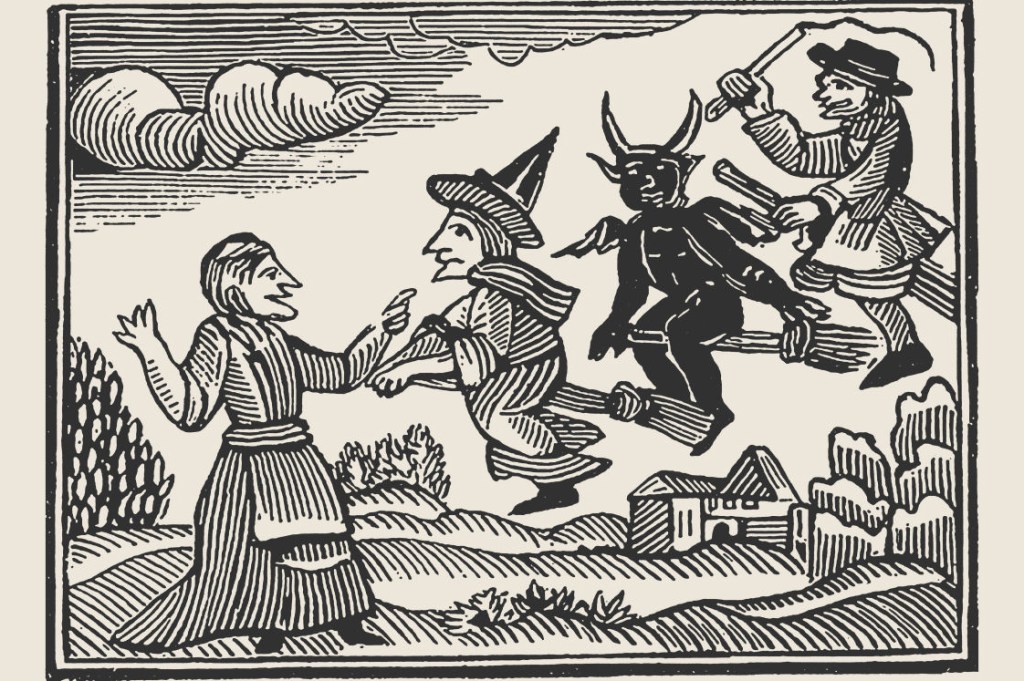Two days before Charlie Kirk was murdered, Jezebel writer Claire Guinan paid witches on Etsy to hex him.
When I first read Guinan’s article, my thought was that it was quintessential Jezebel: clickbait that might have interested 19-year-olds in 2011, back when witchcraft still had a frisson of feminist rebellion. She bought curses from sellers like “Priestess Lilin.” She imagined Kirk’s socks sliding down, his blazers shrinking, his thumb growing too big to tweet. The piece was meant to be funny, a way to channel political rage into something absurd, petty and hopefully entertaining.
Forty-eight hours later, Kirk was dead.
Jezebel first added an editorial note condemning political violence, then removed the piece entirely on their lawyers’ recommendation. Guinan doesn’t deserve hysteria or —worse— legal repercussions for a warmed-over blog post about Etsy witchcraft. But the editorial note wasn’t out of left field, maybe surprisingly, for those of us who grew up in a world where the media was overwhelmingly atheistic.
The article drew significant criticism across media. Megyn Kelly condemned both Etsy and Jezebel in a segment on her show. Commentator Peachy Keenan characterized the hex article as “solicitation of murder.” Rod Dreher and other religious pundits described it as an act of “spiritual warfare.”
This last characterization – spiritual warfare – is worth examining, though perhaps not in the way these commentators intended.
Aleister Crowley defined magick (with a “k” to distinguish it from stage magic) as “the Science and Art of causing Change to occur in conformity with Will.” This definition – perhaps ironically to some, given the source – strips away supernatural window-dressing and reveals what magic really is: the deliberate use of consciousness to attempt to reshape reality. Every time we imagine a possible future, we’re doing magic.
This is what visualization means in magical practice. You create a detailed mental image and hold it, return to it, feed it with emotion and repetition until it becomes more real than physical reality itself. Your brain starts filtering the world through this image. You notice every piece of evidence that confirms it and dismiss what doesn’t. You’ve reprogrammed your perception. That’s what “The Secret,” of Hollywood trend and Oprah fame, is (you’re welcome – saved you twenty bucks).
When Utah students petitioned to ban Kirk from campus days after the hex, when someone tweeted his head looked bigger, Guinan saw evidence of magical success. The ritual had influenced her attention, making her sensitive to negative news about Kirk. Paying $15 – or $50 – to Etsy witches like “Priestess Lilin” for a hex seems harmless, even ridiculous.
But Guinan’s Etsy purchase is just a more obvious version of something we all do, all the time: dwelling on negative thoughts about people we dislike. Whether it’s buying a curse online or mentally wishing someone would fail repeatedly, we’re doing the same thing – focusing our mental energy on someone else’s pain. And that focus has real effects.
There are two ways to understand this.
The first possibility is that hexes work through supernatural means – that somehow our thoughts can reach across space and actually affect someone. Religious conservatives like Rod Dreher might call this demonic influence or, if the focus is positive instead of negative, compare it to the power of prayer. People into New Age spirituality might say it’s “the universe” responding, or talk about “energy,” “manifestation” and “vibes.”
The basic idea is the same: our focused intentions somehow influence reality in ways science can’t explain. It works in both directions, positive and negative.
The Princeton Engineering Anomalies Research Lab spent 28 years documenting how focused human consciousness seems to influence random number generators. Over millions of trials, they found a tiny but statistically significant effect when people concentrated on specific outcomes. Art Bell, the late-night radio host, ran experiments where millions of listeners simultaneously directed attention toward a single issue. In a July 1998 episode, he urged his listeners to focus on bringing rain to drought-stricken Northeast Florida. Allegedly, it worked.
The second possibility is more mundane but no less powerful – and one we should pay attention to. Hexes, or manifestation (or prayer) reshape social reality. The most dangerous curse is making someone believe they’re cursed. It’s especially effective on the internet – where magic seems to become real. When thousands simultaneously focus negative attention on someone, each person becomes primed to see that individual negatively. They feel permitted – even encouraged – to attack. The hex becomes self-fulfilling through thousands of small actions: unfollows, harsh comments, canceled invitations, hostile interpretations. And in the darkest cases, it creates an atmosphere where violence becomes more thinkable – where someone already on the edge might feel the collective “permission” to act.
No supernatural forces required – just the aggregate effect of collective imagination turned toward a single person or group.
Neuroscience research shows the brain treats imagined interactions as practice runs for real ones. Studies on forgiveness reveal that people who release grudges have better cardiovascular health, improved sleep, reduced inflammation. Those who nurture grievances through mental rehearsal show chronic stress responses, disrupted sleep patterns, persistent inflammation. Your body can’t tell the difference between symbolic and real conflict. Brain imaging shows that people who spend time mentally rehearsing negative outcomes for others develop stronger neural pathways for threat detection and weaker ones for empathy.
Traditional magicians developed rules because they understood these dangers. Don’t cast spells when emotional – performing magic in a heightened state locks that emotion into the working. If you hex someone while enraged, you’re not just sending anger outward but crystallizing it within yourself. Protect yourself from backlash by creating psychological barriers between you and the intention. Ground yourself after working through physical activity, eating or meditation. Without this, practitioners report staying trapped in the magical mindset, seeing signs everywhere.
This is part of why some magical paths, like Wicca, which is largely based on Crowley’s magick, emphasize “harm none,” not just as ethics but as self-preservation.
The internet has turned us all into accidental witches.
When someone starts trending on X, millions of us do the exact same thing at the exact same time: we screenshot their post, imagine our perfect comeback, fantasize about them getting “destroyed” by the replies, then share it to make sure more people join in. Every group chat where friends tear apart someone’s posts is like a coven casting a spell together – everyone focusing their (negative) energy on the same target. We’ve created a massive system where millions can wish harm on someone simultaneously, but unlike traditional magic practitioners, we have no protection rituals and we put very little thought into what we’re doing to ourselves and others. Every time you imagine someone getting “ratio’d,” every time you mentally compose the perfect takedown, every time you rehearse someone’s cancellation, you’re performing the same ritual Guinan paid those Etsy witches to do. You’re just doing it unconsciously, without protection, and without recognizing the price.
Regardless of which mechanism is true – supernatural forces or social psychology – there’s damage to the practitioner and the environment around them. Whether you’re a real magician or just training your brain for hostility, you’re still hurting yourself and others.
Kirk is dead – and I don’t want to suggest it’s the “fault” of Etsy witches burning his pictures.
We may never know all the factors that led to this atrocity. But we do know that the climate of ritualized hostility creates conditions where the unthinkable becomes possible. The magic we perform carelessly, contributes to an atmosphere thick with malice. And sometimes, in ways we can’t predict or control, that malice finds its expression in the physical world.
Kirk’s death might have been random chance, and certainly a great tragedy. But we should still use it as an opportunity to ask: what kind of reality are we willing into being? The irony is that those panicking about Etsy hexes are missing how we all participate in this dark practice every day online – no crystals or candles required.























Leave a Reply